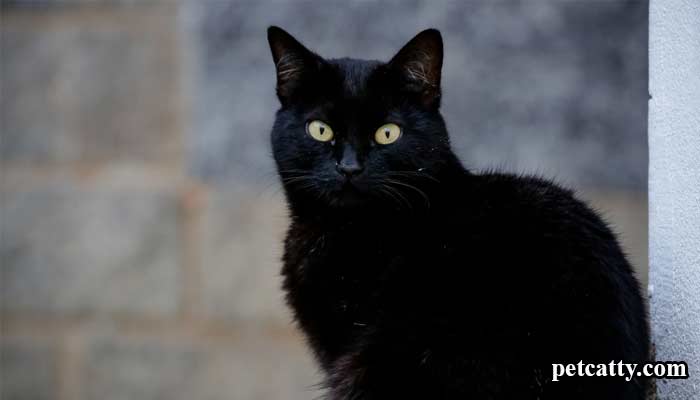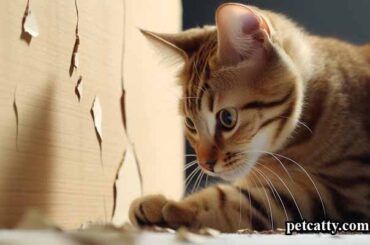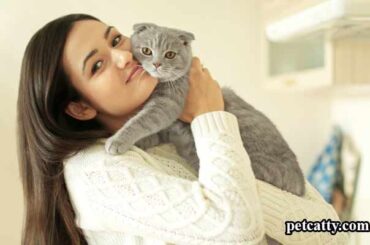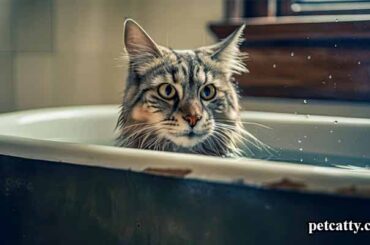Cats are known for their mysterious and often quirky behavior. From kneading to purring when stressed, our feline friends can exhibit some truly unusual habits. Understanding these behaviors is not only fascinating but also crucial for providing the best care for your beloved cat. In this article, we’ll explore 30 weird cat behaviors and dive into the reasons behind each one.
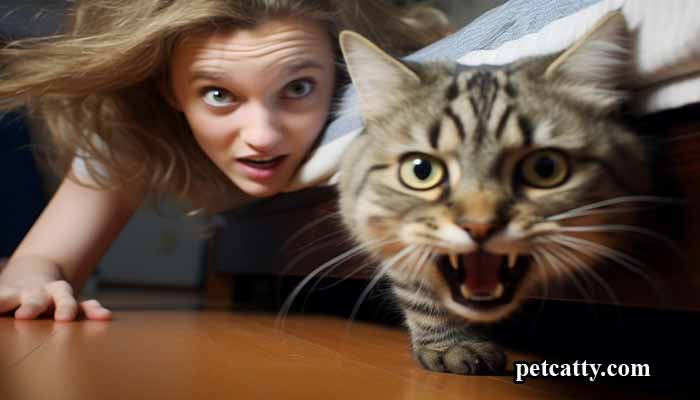
Table of Contents
- 1: Purring While Stressed
- 2: Kneading
- 3: Cat Zoomies
- 4: Cat Chattering
- 5: Head-Butting
- 6: Tail Quivering
- 7: Licking Plastic
- 8: Sleeping in Strange Places
- 9: Yowling at Night
- 10: Knocking Things Over
- 11: Playful Biting
- 12: Obsessive Grooming
- 13: Pica (Eating
- 14: Box Obsession
- 15: Pouncing on Shadows
- 16: Staring at Walls
- 17: Bruxism (Teeth Grinding)
- 18: Toilet Paper Unrolling
- 19: Tail Twitching While Sleeping
- 20: “Gifts” of Dead Animals
- 21: Eating Grass
- 22: Crouching and Stalking Prey
- 23: Chirping at Birds
- 24: Sleeping with Eyes Open
- 25: Pawing at Water
- 26: Purring While in Pain
- 27: Hiding When Sick
- 28: Flicking Ears
- 29: Tail Upright and Puffed
- 30: Crying to Open Doors
- Conclusion
1: Purring While Stressed
Cats are known for their soothing purrs, but have you ever noticed your cat purring when they’re stressed? This strange behavior often leaves cat owners puzzled, but it has a fascinating explanation. When a cat is stressed, they may purr as a self-soothing mechanism. The vibrations from purring can help calm their nerves. It’s like a built-in stress-relief mechanism for your furry friend.
2: Kneading
One of the most endearing behaviors in cats is kneading. It’s when your cat presses their paws alternately against a soft surface, like your lap or a cozy blanket. This behavior is a throwback to kittenhood, as they knead their mother’s belly to stimulate milk flow. It’s a sign of comfort and contentment.
3: Cat Zoomies
Cat zoomies are those sudden bursts of energy that send your cat racing around the house as if they’re chasing an invisible foe. These high-speed sprints and acrobatic feats can be entertaining to watch. Cat zoomies are a way for your feline friend to release excess energy. It’s like their version of a power workout.
4: Cat Chattering
Have you ever seen your cat intently watching birds outside and making a chattering sound? This bizarre behavior is known as cat chattering. It’s thought that your cat is expressing their frustration at not being able to catch their feathered prey. The chattering is a manifestation of their hunting instincts.
5: Head-Butting
Cats often head-butt their owners as a sign of affection and trust. This seemingly odd behavior is a way for your cat to bond with you. They have scent glands on their heads, and by head-butting, they are marking you as part of their territory.
6: Tail Quivering
A cat’s tail quivering can be both amusing and intriguing. This behavior often happens when your cat is intensely focused on something, like a toy or a bird outside. The quivering tail reflects their excitement and anticipation of pouncing on their target.
7: Licking Plastic
Some cats have a bizarre fascination with licking plastic bags or other plastic items. While it may seem strange, it’s believed to be related to the texture and scent of the plastic. For some cats, it’s a soothing and comforting act, similar to how others might suck their thumb.
8: Sleeping in Strange Places
Cats have a knack for finding the oddest places to take a nap. Whether it’s a cardboard box, a laundry basket, or a kitchen cabinet, cats can turn any spot into a cozy haven. This behavior is linked to their desire for warmth, safety, and a sense of seclusion.
9: Yowling at Night
Cat owners are familiar with the eerie yowling sounds that cats sometimes make in the middle of the night. This behavior often occurs when cats are in heat or when they want attention. It can be quite a nuisance but can usually be managed with proper care.
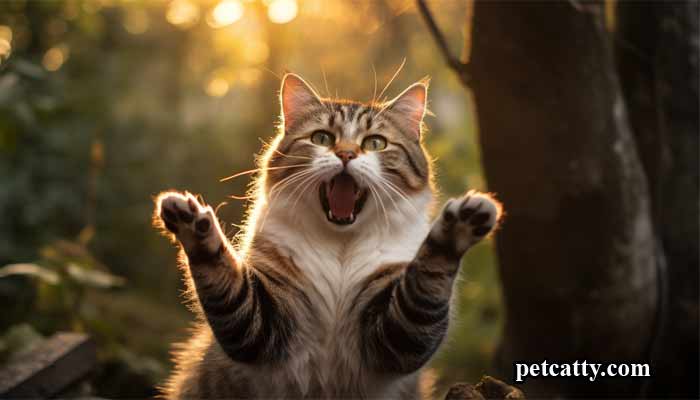
10: Knocking Things Over
The notorious habit of knocking objects off shelves or tables is a common cat behavior. It might seem mischievous, but it’s often your cat’s way of exploring and playing. Knocking things over provides sensory stimulation and can be a sign of boredom.
11: Playful Biting
Playful biting, where your cat nibbles or lightly bites you during play, is a common behavior. It’s a way for cats to mimic hunting and engage in interactive play with their human companions. It’s usually a harmless and fun interaction.
12: Obsessive Grooming
Cats are meticulous groomers, but some cats take it to the extreme. Obsessive grooming can lead to hair loss and skin problems. It’s often a sign of anxiety or discomfort, so it’s essential to address the underlying cause.
13: Pica (Eating
Pica is the term used for cats eating non-food items, such as wool or plastic. This strange behavior can be caused by nutritional deficiencies, dental issues, or simple curiosity. It’s essential to discourage pica and keep your cat safe.
14: Box Obsession
Ever wondered why cats are so irresistibly drawn to boxes? The fascination with boxes is a result of their instinctual desire for hiding, stalking, and pouncing. Boxes offer a secure and enclosed space where cats can play and feel safe.
15: Pouncing on Shadows
Cats love to pounce on moving shadows, whether they’re from a passing car or a fluttering curtain. It’s an expression of their predatory instincts. The sudden movement triggers their hunting drive, making it a source of endless entertainment for indoor cats.
16: Staring at Walls
If you’ve ever caught your cat intensely staring at a blank wall, you’re not alone. Cats can be entranced by seemingly empty spaces. While the reason for this behavior isn’t entirely understood, it might be related to their acute senses, picking up subtle movements or sounds we can’t perceive.
17: Bruxism (Teeth Grinding)
Bruxism, or teeth grinding, is a relatively uncommon cat behavior. It can be a sign of dental problems or stress. If you notice your cat grinding their teeth, it’s essential to consult with a veterinarian to rule out underlying health issues.
18: Toilet Paper Unrolling
The infamous act of unrolling toilet paper is a playful behavior observed in many cats. They enjoy batting at the roll, causing it to unravel. While it may be frustrating for you, it’s all in good fun for your furry friend.
19: Tail Twitching While Sleeping
You might have noticed your cat’s tail twitching while they’re asleep. This behavior is thought to be linked to their dream state. It’s often an adorable and amusing sight.
20: “Gifts” of Dead Animals
Cats occasionally bring their owners “gifts” in the form of dead animals. This behavior stems from their hunting instincts. Cats view their owners as part of their family group and may be attempting to provide for them in the same way they would for their wildcat family.
21: Eating Grass
Have you ever wondered why your cat nibbles on grass? Eating grass is thought to help cats with digestion and might even help them eliminate hairballs. It’s their natural way of self-medicating.
22: Crouching and Stalking Prey
Even indoor cats can’t resist their hunting instincts. You might notice your cat crouching and stalking imaginary prey, like a stray feather or a moving laser pointer. It’s a way to engage their instincts and provide mental stimulation.
23: Chirping at Birds
Cats often make a chirping or chattering sound when watching birds through a window. This behavior is related to their hunting instincts, as they express their excitement and anticipation.
24: Sleeping with Eyes Open
It’s not uncommon to find your cat sleeping with their eyes partially open. This behavior can be attributed to their vigilance and readiness for any potential threats, even while resting.
25: Pawing at Water
Some cats enjoy pawing at running water in sinks or fountains. It’s a playful behavior and might be related to their natural curiosity about flowing water.
26: Purring While in Pain
Cats have been known to purr even when they’re in pain. This paradoxical behavior may be a way for cats to comfort themselves during distressing times. It’s a testament to their stoic nature.
27: Hiding When Sick
When cats are unwell, they often hide. This behavior is a survival instinct. In the wild, showing weakness could make them vulnerable to predators. It’s essential to monitor your cat and seek veterinary care if they exhibit this behavior.
28: Flicking Ears
Cats often flick their ears to adjust to sounds or catch distant noises. Their keen sense of hearing makes ear-flicking a common behavior. It helps them focus on specific sounds.
29: Tail Upright and Puffed
A cat with an upright and puffed tail is expressing intense emotions. It can signal fear, excitement, or aggression. Understanding the context and your cat’s body language is key to interpreting this behavior.
30: Crying to Open Doors
If your cat meows and cries to have doors opened, they’re communicating their desires. This behavior often means they want access to a room or the outdoors. Responding to their cues can help keep them content.
Conclusion
Understanding your cat’s weird behaviors is not just about indulging their quirks but also about ensuring their well-being. Cats have unique ways of expressing themselves, and these behaviors often have fascinating explanations rooted in their instincts and needs. By paying attention to these 30 weird cat behaviors, you can better connect with your feline friend and provide the care and attention they deserve. Embrace the quirks and eccentricities of your cat, and you’ll enjoy a deeper bond with your furry companion.


